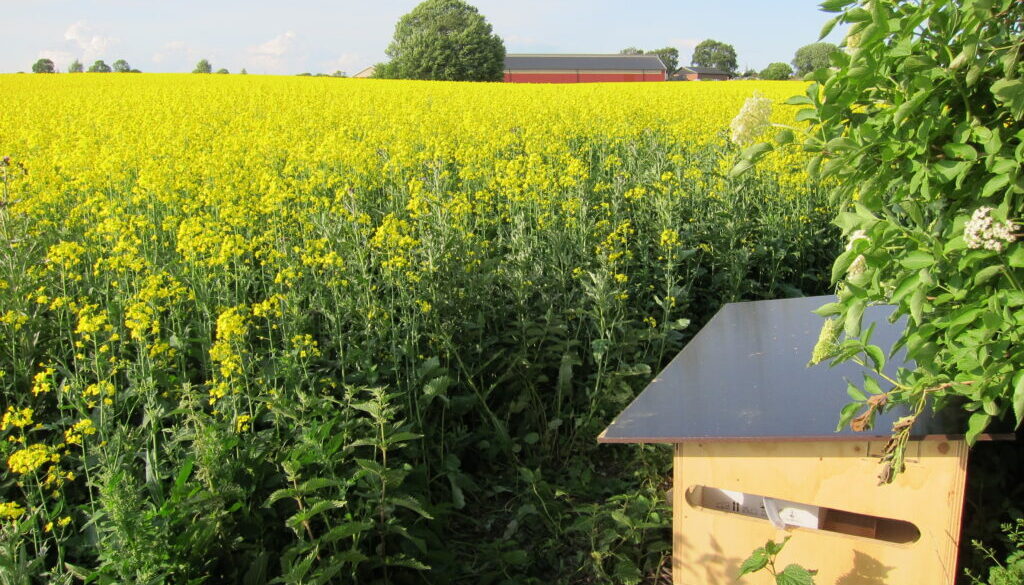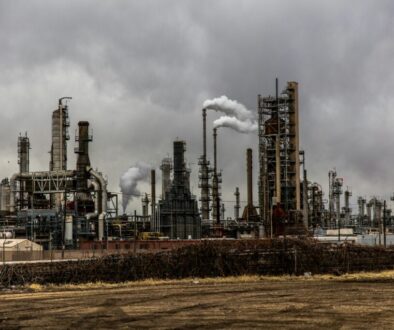Pesticides continue to plague bee health, study warns
Pesticides sprayed on farmland continue to harm bumblebees in Europe, underscoring a need for more protective regulatory oversight, according to a new study that revealed how bees respond to real-world pesticide exposure at 106 sites across eight countries.
The analysis, part of a project called PoshBee that aims to monitor and improve bee health across Europe, went beyond standard field experiments that measure how bees respond to a single substance in a test environment. Instead, the researchers studied bumblebees in actual farm landscapes – apple and rapeseed fields – treated with multiples pesticides. Bumblebee colonies with greater toxicity from pesticides in their pollen had fewer total cocoons, weighed less altogether, and had fewer new queens, according to the study, which was published Wednesday in the journal Nature.
Insecticides, including neonicotinoids, pyrethroids, and organophosphates, posed a greater risk to the bees than other types of pesticides.
“This is a very important study,” said Margaret Reeves, a senior scientist at the Pesticide Action Network (PAN) North America who was not involved in the study. “Pesticides are almost never used in isolation [and] can drift long distances, with those used in close proximity to one another especially likely to interact. Much of this we simply don’t understand because various kinds of mixtures are seldom studied.”
“If pesticides in agricultural fields pose the problems described to bees, just imagine what these pesticides are doing to the millions of field workers in those same fields,” she added.
The findings point to a need to monitor approved pesticides after farmers begin spraying them in the environment, a strategy that could also safeguard species important for pest control and soil quality on farms, said Jessica Knapp, an assistant professor of botany at Trinity College Dublin in Ireland and an author of the study.
“For us, it’s not necessarily that [risk assessment] should become tighter, it’s that it should become more realistic with what these species are actually exposed to in real landscapes,” she said. “Once [pesticides] go through all the regulation, the testing effectively stops, which is obviously nonsensical because we don’t know what is happening in these real environments. That’s where we really want a change.”
The study comes on the heels of the European Parliament’s failure last week to pass the Sustainable Use of Plant Protection Products Regulation (SUR), proposed legislation that included targets to slash the use and risk of chemical pesticides in the European Union in half by 2030. SUR was rejected because decision makers felt that pesticide reduction wouldn’t be economically viable for farmers, said Knapp, adding that farmers need such protections to ensure healthy landscapes for future generations.
“Countries outside the [European Union] should also take note of these results, as many nations have looser pesticide regulations that may lead to more magnified impacts on wild bees,” said Clara Stuligross, a postdoctoral researcher at the University of California, Riverside who was not involved in the study.
Measuring real-world risk
Previous research has shown that pesticides wreak havoc on bees and other pollinators, adding to stressors such as habitat loss and exposure to diseases. The toxic chemicals can kill bees and affect their reproduction, navigation, and memory. The effects of pesticide exposure can even carry over to future generations of bees, according to a 2021 study published by Stuligross and colleagues in the Proceedings of the National Academy of Sciences.
Neonicotinoids, a common class of pesticide used to treat crop seeds, have been received increasing attention for their deadly toll on bees, with Europe banning them in 2018 and California recently becoming the 10th US state to limit their sale. Last spring, conservation groups sued the US Environmental Protection Agency (EPA) for exempting seeds coated in neonicotinoids from regulatory oversight.
While field studies have previously demonstrated that neonicotinoids used for agriculture can harm wild bees, there has been a lack of field-based data showing how combinations of pesticides in landscapes affect wild bee colonies, according to the Nature study.
To help fill this gap, Knapp and colleagues collected pollen samples from 316 bumblebee colonies, which they screened for 267 compounds in order to measure pesticide residues. The researchers weighed the colonies before, during, and after the apple or rapeseed crops bloomed and counted the bees after the crops bloomed, correlating the health and success of the colonies at each site with level of pesticide risk.
On average, the researchers found eight pesticide compounds in the bees’ pollen, with as many as 27 compounds from a single colony, said Knapp. While 81% of the total residues they identified were fungicides, 99% of residue-related risk to bees came from nine insecticide compounds, including the neonicotinoid imidacloprid. European Union countries issued at least 67 “emergency authorizations” for use of imidacloprid and other chemicals in the pesticide class in the first two years after they were banned.
While PoshBee focuses on honeybees, bumblebees, and solitary bees, this study focused solely on bumblebees.
“I think that’s a good species to use for this type of study because it’s more representative of wild species than the honeybee, which is where risk assessment is focused and a lot of our scientific understanding comes from,” said Knapp.
However, bumblebees are also more resilient compared to solitary bee species, suggesting the findings are “likely underrepresenting how this type of exposure is affecting the wider pollinator community,” she added.
[Featured image: Bumblebee house in a rapeseed field. Photo by Maj Rundlöf.]
 EWG
EWG


